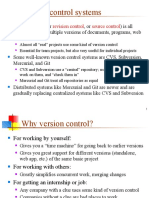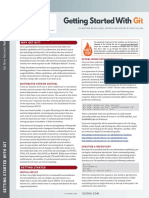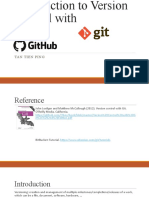0% found this document useful (0 votes)
12 views21 pagesA Version Control System
A version control system (VCS) is essential software for tracking and managing changes to files, particularly in software development, enabling collaboration, version reversion, and change comparison. Git, a popular distributed version control system created by Linus Torvalds, allows developers to track code changes, collaborate globally, and maintain project history efficiently. The document also covers Git installation, configuration, and basic commands for managing repositories and files.
Uploaded by
bhuvanesh121314Copyright
© © All Rights Reserved
We take content rights seriously. If you suspect this is your content, claim it here.
Available Formats
Download as DOCX, PDF, TXT or read online on Scribd
0% found this document useful (0 votes)
12 views21 pagesA Version Control System
A version control system (VCS) is essential software for tracking and managing changes to files, particularly in software development, enabling collaboration, version reversion, and change comparison. Git, a popular distributed version control system created by Linus Torvalds, allows developers to track code changes, collaborate globally, and maintain project history efficiently. The document also covers Git installation, configuration, and basic commands for managing repositories and files.
Uploaded by
bhuvanesh121314Copyright
© © All Rights Reserved
We take content rights seriously. If you suspect this is your content, claim it here.
Available Formats
Download as DOCX, PDF, TXT or read online on Scribd
/ 21


















































































